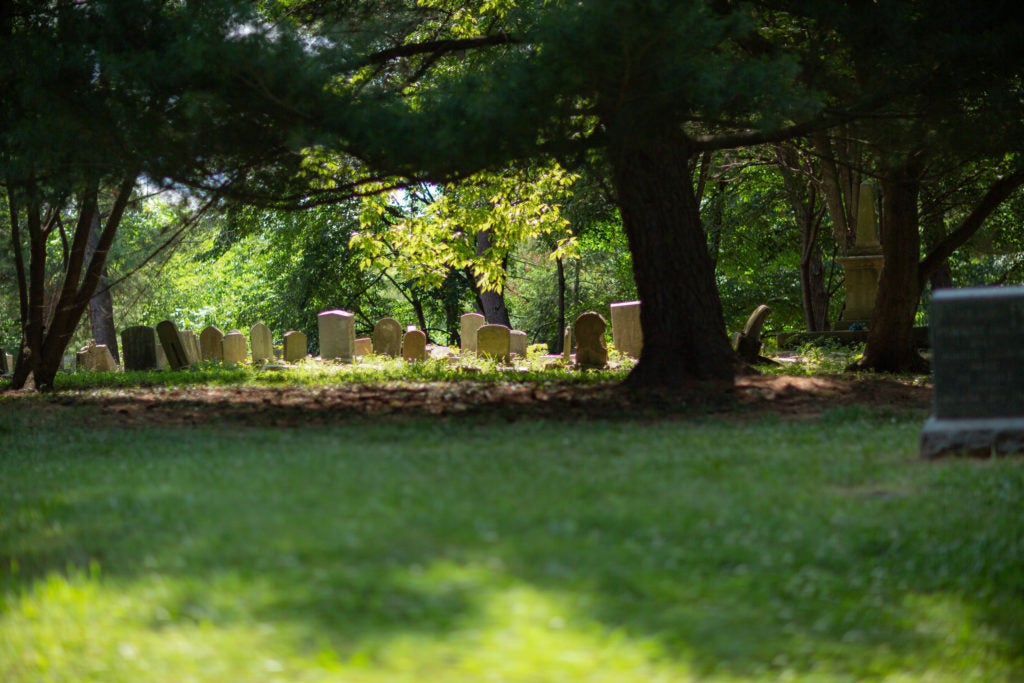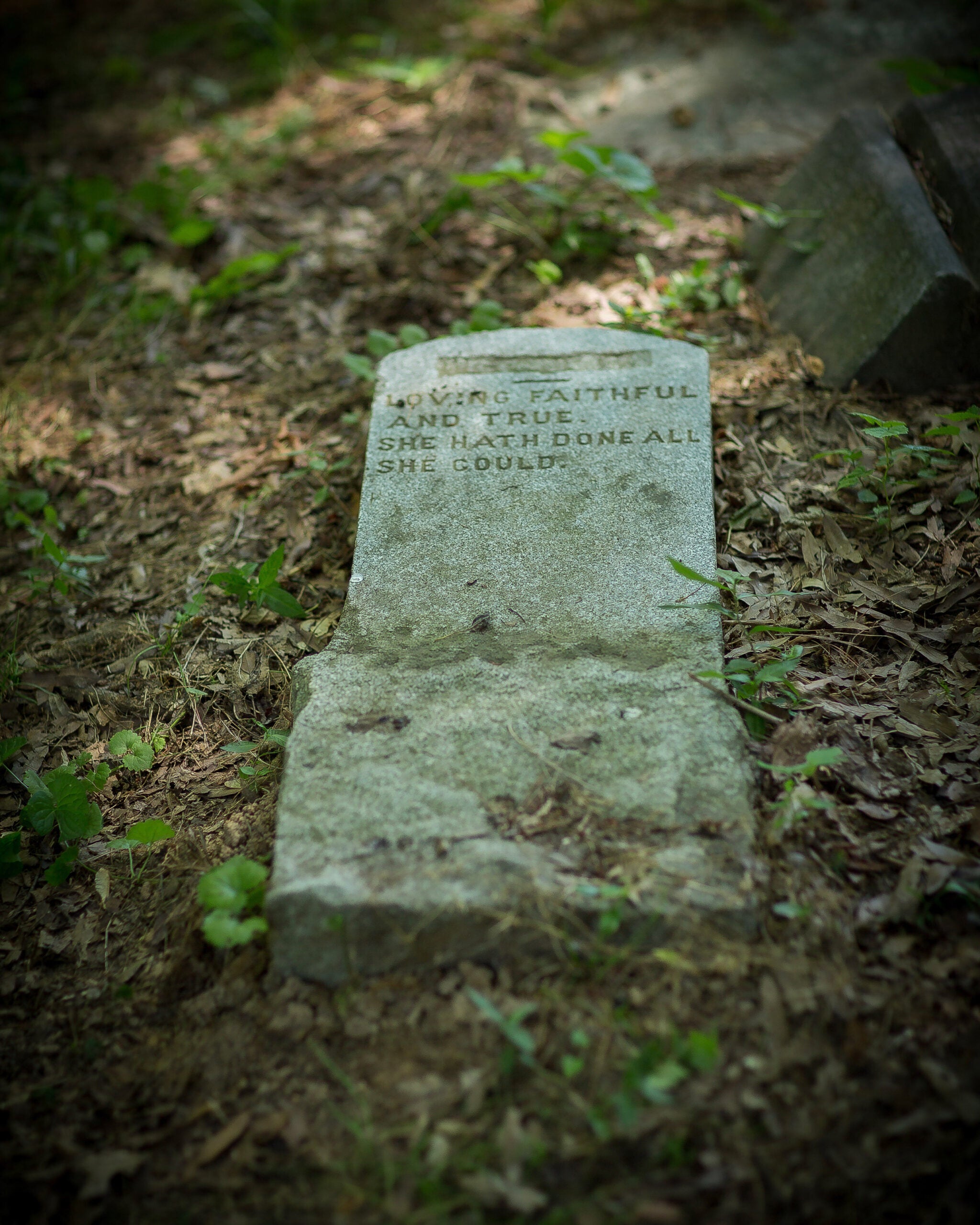During the summer, Tom Duckenfield’s daughter asked him to take her to the newly inaugurated Black Lives Matter Plaza in Washington, D.C., where they live. He in turn took her to another place to convey the same message the plaza does: a cemetery.
With a class called Headstones and History: Black Lives Matter(ed), which he taught this summer with his childhood friend Garrett Lowe, Duckenfield ’89 helped uncover the rich history of those buried in two adjoining predominantly Black cemeteries in the Georgetown area of Washington. He and Lowe worked with a group of about 25 mostly teenage students from the D.C. area (including Duckenfield’s 15-year-old daughter, Catherine) and a few of their parents, who did headstone rubbings, toured Georgetown to see homes where some of the occupants of the cemeteries lived, and researched their ancestry.
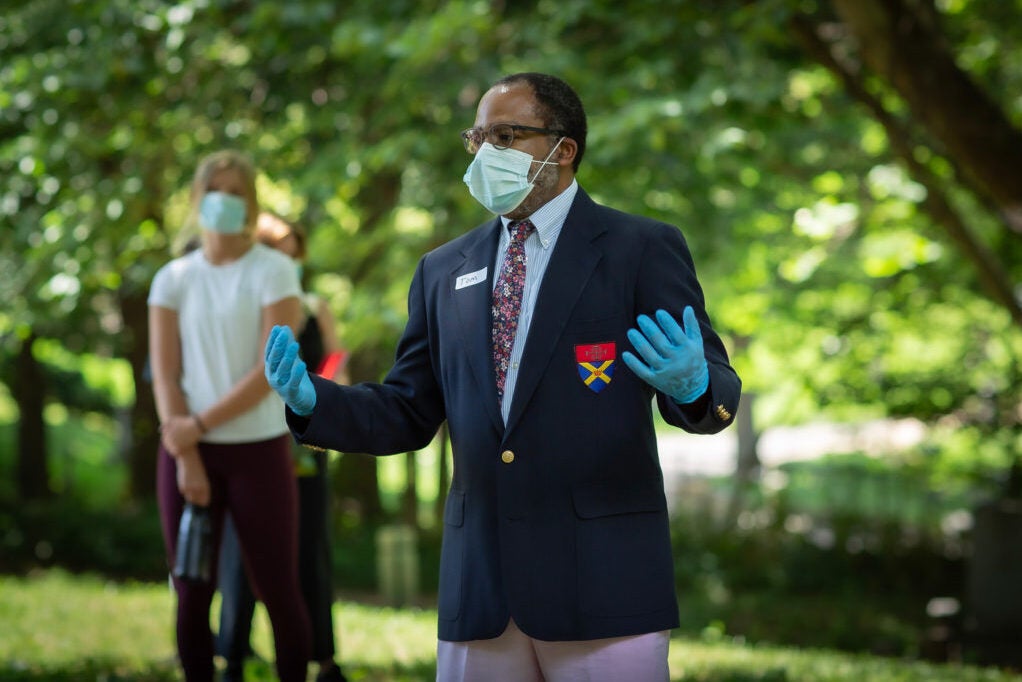
Tom Duckenfield ’89 speaking at the final class. For him, the sessions were about learning about the past but also connecting it to the present. The people buried in these cemeteries deserve respect and attention, he says—no different from African Americans living now whose stories are often unknown and unseen by the larger population.

The 25 participants in the course, Headstones and History, helped uncover some of the stories of the people buried in the two predominantly Black cemeteries. Each class member was given a name to research and guidance through Zoom calls as they looked through documents and historical records for pertinent details. The final class was held at the burial grounds, where participants spoke about the people they had researched and participated in a ceremony to honor their lives.
.
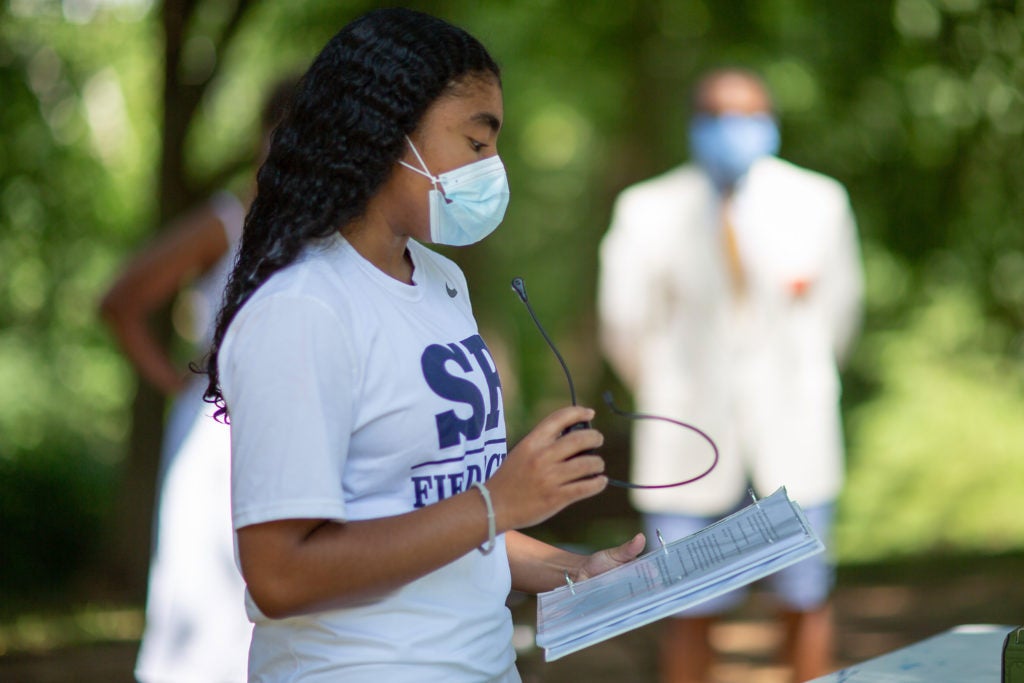
Duckenfield’s daughter Catherine, talking about the life of Robert Logan, not far from his gravesite
Exploring the lives of the deceased, which spanned from about 1740 to 1970, provided Duckenfield, who is African American, with an opportunity to discuss with the students social and political events that impacted Black people, including legal cases like the Supreme Court’s Dred Scott and Plessy v. Ferguson Supreme Court decisions as well as the abolitionist and civil rights movements. And for the students, who come from diverse racial and ethnic backgrounds, it was a chance to feel connected to the current social movement that developed in the aftermath of the death of George Floyd, says Duckenfield.
“By learning about these African American people who had been largely forgotten as they lay in the cemetery, and fleshing out their lives, students could feel that they were contributing to understanding and promulgating African American history, and understanding the lives of African Americans,” he said, “and by doing so, doing something positive with respect to the racial reckoning the country was going through.”
Duckenfield, who operates a government contracting company called TDB Communications, which provides services to veterans (he is a U.S. Army veteran), became interested in genealogy when he was 12 and his grandfather died, leading him to think about his family history. He was inspired to learn how to study the past by history teachers in high school and college, including noted historian James McPherson at Princeton, and wrote his thesis on residential segregation in his native D.C.
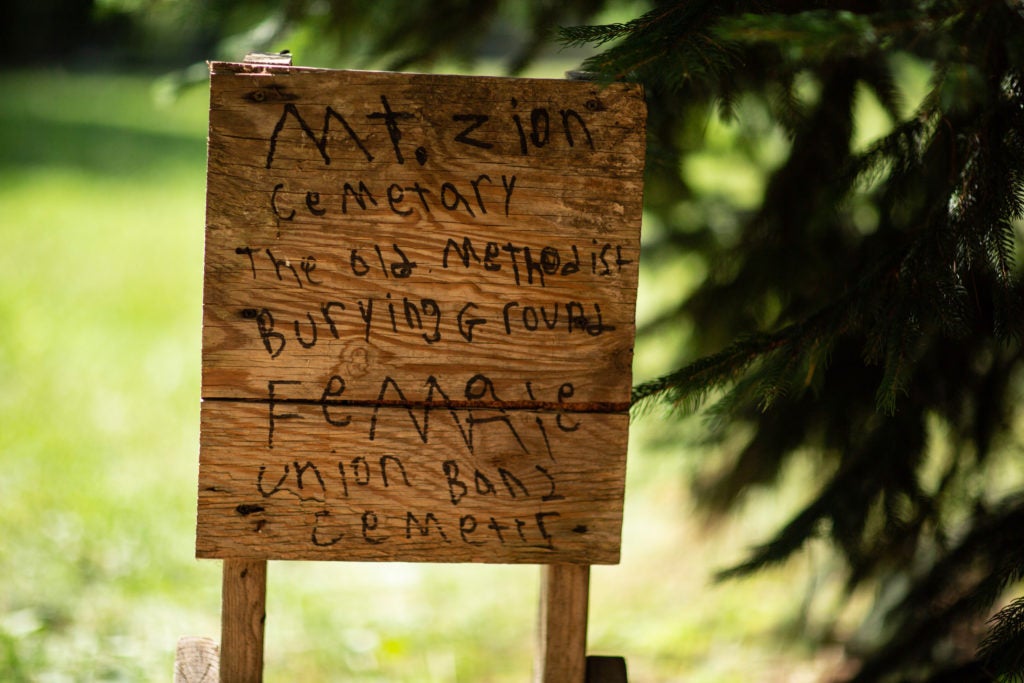
A handwritten sign marks the site of the adjoining Mount Zion and Female Union Band Society cemeteries—burial grounds for thousands of enslaved and free African Americans who lived and raised families in the Georgetown neighborhood of Washington, D.C.
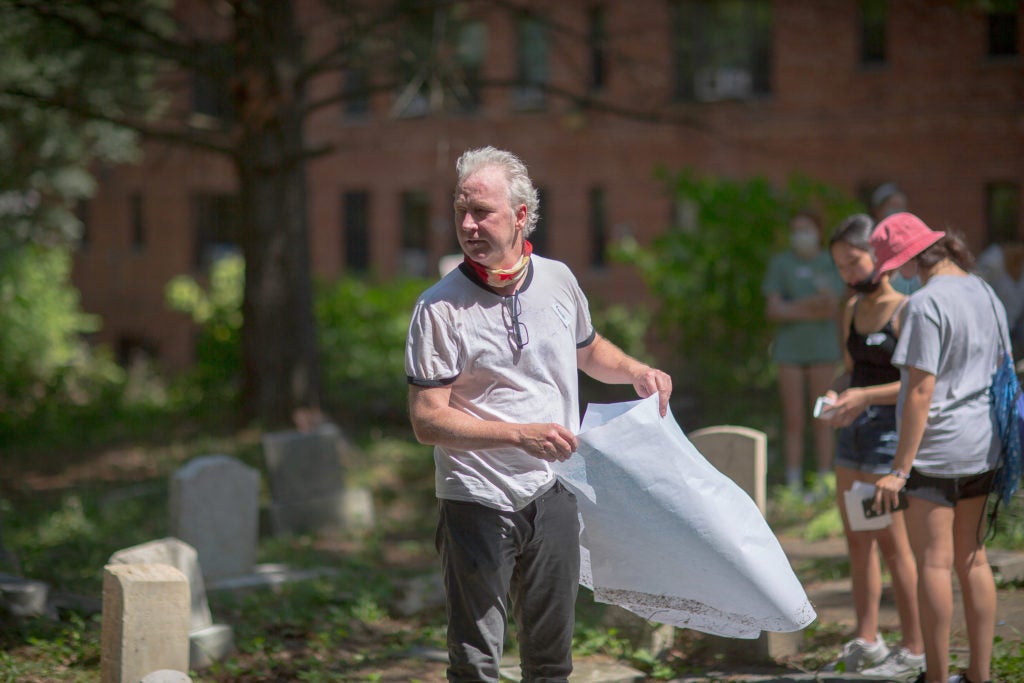
Garrett Lowe holding a headstone rubbing. He came up with the idea for the class he co-taught to bring into focus the lives behind the names.
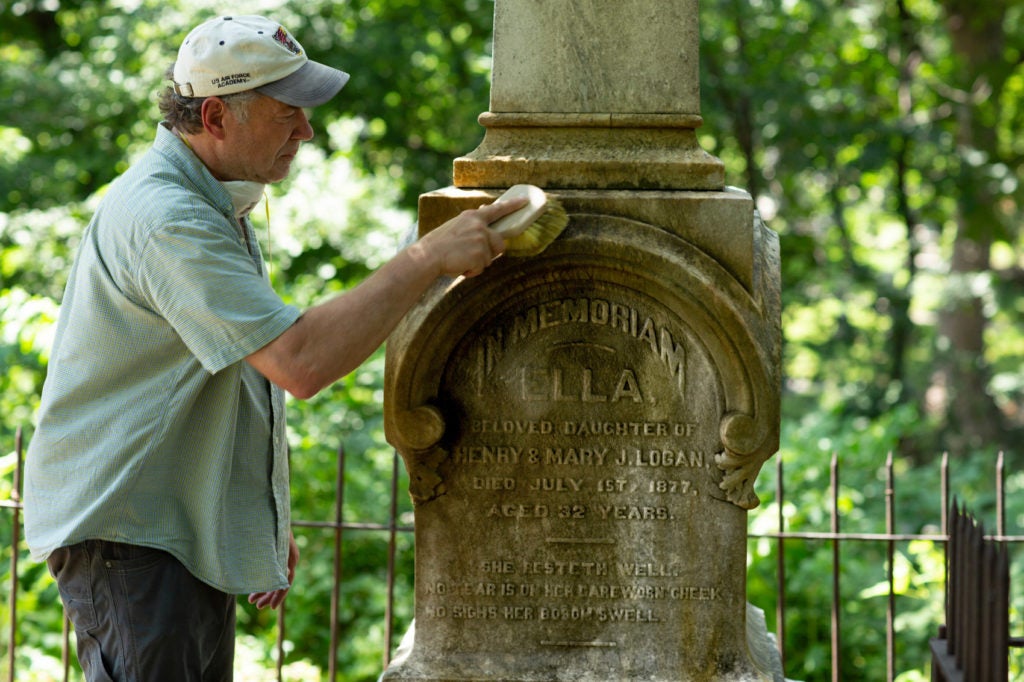
Parents and others helped clean grave markers.
Of course, many of the people the class studied lived under segregation and some under slavery. Duckenfield recalls the story of Ellen Ridgley, who was enslaved by a man in Virginia who fathered her child. When the man died around 1830, he freed her and their daughter in his will. But to achieve freedom in accordance with Virginia law, Ridgley had to leave the state. She found opportunity for a better life in Georgetown, where she was able to establish a business and acquire property.
The cemetery where she is now buried has fallen into disrepair, notes Duckenfield. The people there deserve respect and attention, he says—no different from African Americans living now whose stories are often unknown and unseen by the larger population. He plans to continue teaching that lesson with more students at different cemeteries and would like others to do the same.
He hopes that studying African American history will particularly inspire those who don’t often interact with African Americans, helping them feel a connection: “[T]hey’ve led rich lives. There are things that they’ve cared about, tried to accomplish during their lives. And in that way, we can foster better understanding.”
